 ... the product of the two, plus the square of the second. In the third case, we have (a + b) (a — 6) = a2 — b2. (3) That is, the product of the sum and difference of two quantities is equal to the difference of their squares. ... the product of the two, plus the square of the second. In the third case, we have (a + b) (a — 6) = a2 — b2. (3) That is, the product of the sum and difference of two quantities is equal to the difference of their squares.  A Treatise on Algebra - Page 189by Elias Loomis - 1846 - 346 pagesFull view A Treatise on Algebra - Page 189by Elias Loomis - 1846 - 346 pagesFull view - About this book
 | Shelton Palmer Sanford - Algebra - 1879 - 348 pages
...Ans. - . 20. Square (a" - 1). Ans. a»n - 2a" + 1. THEOREM III. 69. The product of the SUM and the DIFFERENCE of two quantities is equal to the difference of their squares. Ex. 1. What is the product of (a +6) multiplied by (a- 6)? OPERATION. a + 6 Analysis. Multiplying (a... | |
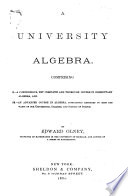 | Edward Olney - Algebra - 1880 - 354 pages
...square of the first, minus twice the product of the two, plus the square of the second. 87. THEO. — The product of the sum and difference of two quantities is equal to the difference of their squares. The demonstration of these three theorems consists in multiplying x + у by x + y, x — у by x —... | |
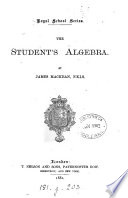 | James Mackean - 1881 - 510 pages
...III. Multiply a + b by a - b. a + b a - b а2+ ab - ab -V2 a2 -62 Л (a + 6)(а- 6) = a2 -62. That is, the product of the sum and difference of two quantities is equal to the difference of the squares of the quantities. IV. Multiply a2 - o6 + 62 by a + b. a? -ab +62 a +b +63 That is, if... | |
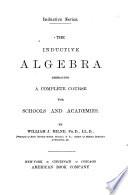 | William James Milne - Algebra - 1881 - 360 pages
...the quantities ? 2. What sign connects the terms? 79. PRINCIPLE. — The product of the sum and the difference of two quantities is equal to the difference of their squares. 26. (r + *)(r—s). 27. (m -fn) (m — n). 28. (c + a)(c — a). 29. (*-!)(*+!). EXAMPLES. 31. 32.... | |
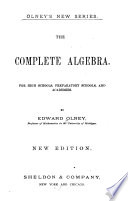 | Edward Olney - Algebra - 1881 - 506 pages
...Operation. Explanation. — I observe that a — \/b will be rationalized by multiplying it by a+ \/b, since the product of the sum and difference of two quantities is the difference of their squares. Hence multiplying both terms of the fraction, so as not to alter its... | |
 | Edward Olney - Algebra - 1882 - 358 pages
...square of the first, minus twice the product of the two, plus the square of the second, 87. THEO. — The product of the sum and difference of two quantities is equal to the difference of their squares. EXAMPLES. 1. Multiply together 3ax, — Загхг, <íby, — у3, and 2хгуг. 2. Multiply together... | |
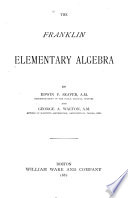 | Edwin Pliny Seaver, George Augustus Walton - Algebra - 1881 - 304 pages
...Two Quantities. 133. We learn by multiplication that which means that the product of the sum and the difference of two quantities is equal to the difference of their squares. Reversing this formula, we have 134. Exercises. Separate into two factors 78. a 2 -af. 88. 47, 4 -1GPm... | |
 | Popular educator - 1884 - 910 pages
...— = aa aaa aaaaa If a + Ъ be multiplied into о — b, the product will bo a*— Tf ; that is — The product of the sum and difference of two quantities is equal to the difference of their squares. This is an instance of the facility with which general truths are demonstrated in algebra. If the sum... | |
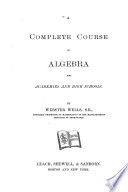 | Webster Wells - Algebra - 1885 - 370 pages
...plus the square of the second. In the third case, we have (a -\-b)(a — b) = a2 — 62. (3) That is, the product of the sum and difference of two quantities is equal to the difference of their squares. EXAMPLES. 96. 1 . Square 3 a + 2 be. The square of the first term is 9 a2, twice the product of the... | |
 | Webster Wells - 1885 - 368 pages
...plus the square of the second. In the third case, we have (a + b) (a — 6) = a2 — b2. (3) That is, the product of the sum and difference of two quantities is equal to the difference of their squares. EXAMPLES. 96. 1. Square 3 a + 2 be. The square of the first term is 9 a2, twice the product of the... | |
| |